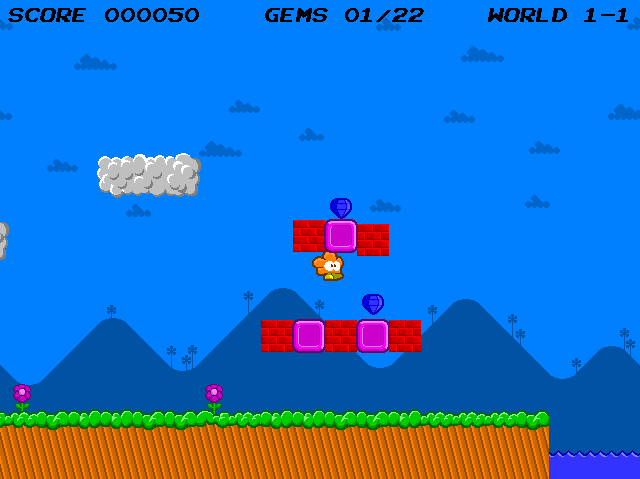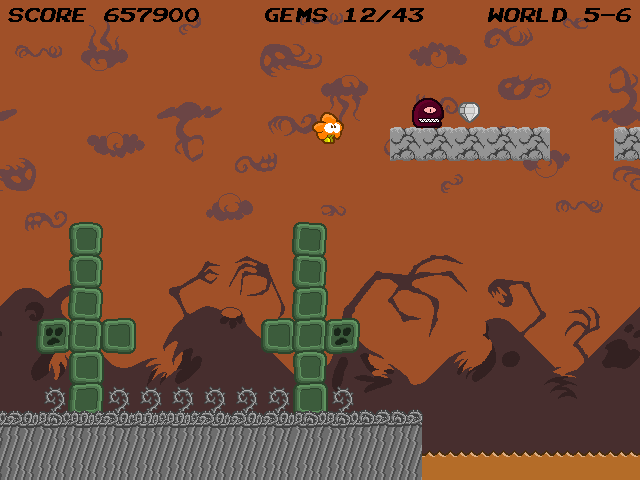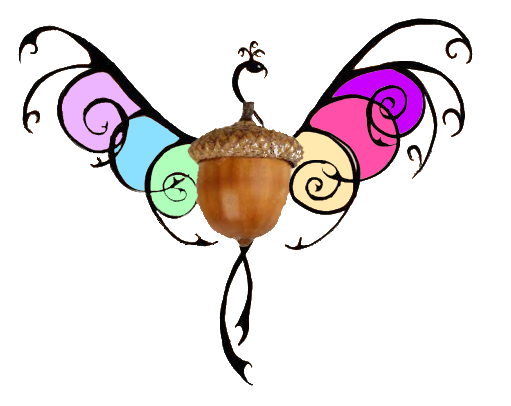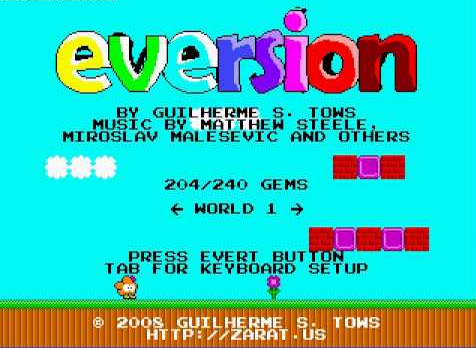I have stated in the past that I have grown tired of people asking whether or not games can be art due to various reasons. One of the main reasons that I dislike this topic’s consistent appearance is because it seems to be causing a general insecurity on the part of a lot of developers. The more that people believe that games are not art, the more people will sacrifice quality in an attempt to make an artistic statement simply because they think the latter is more important. Normally the best case scenario is a well designed game with a pretentious story that tries too hard to be deep and the worst case is having a game that uses bad game design as an excuse to support said pretentious story. Eversion, however, manages to be a game that actually succeeds in using its gameplay as a story telling tool and being fun at the same time.
Now technically games have been implementing story telling into gamplay mechanics for years, but not many do so without any dialogue or cutscenes, and even fewer do it well. Eversion takes the 2D side scrolling platformer formula used since Super Mario Bros and uses it to create a game that plays off the player’s familiarity and uses it to its advantage from a narrative stand point. Eversion is quite possibly one of the most effective psychological horror games ever made despite it having no cutscenes, story, blood, and being only a little over an hour long. At the same time, however, the game succeeds so well at what it is doing because it does not beat you over the head with what it is trying to tell you. In fact, unlike other artistic indie games, Eversion does not have something that it is trying to tell you, but it just so happens to be deep enough that you can get something out of it anyway.

Eversion is a game that heavily relies on contrast in comparisons to other simplistic platformers in order to achieve its goal. Perhaps what best sums this up is how, when you first start the game up, you see a quote from H.P. Lovecraft, yet what follows is a very colorful title screen with cheery sounding chiptune music on it. That right there is Eversion in a nutshell; it starts out looking and feeling like a cutesy 2D platformer with designs that seem heavily influenced by the original Super Mario Bros, but then it slowly gets darker. I obviously cannot, and do not, want to spoil how it gets scarier, but I will try and describe it in a way as vague as possible while still hopefully giving an understanding.
The first way that the game slowly increases the creepiness factor is through the graphical design. The game has a Link to the Past dark world style mechanic where you need to get through levels by moving between alternate worlds. The first world is light and colorful but afterwards they slowly start to grow more desolate and creepy. I am not going to say anything else about how Eversion does this seeing as how the way it is executed is half the experience. The second way the game increases the creepiness factor, which also ties very well into the first one, is the music. The music slowly changes as you change worlds. The individual tracks for each world start out from cheery and upbeat to more serious, until you end up with more than one song that is creepy and unnerving enough that it can be played on the first level of Super Princess Peach and still be just as scary. I will just say that without the music, the game would not be nearly as scary as it is.

One other thing that I noted about Eversion was how it manages to scare the player without any dialogue, cutscenes, or graphic imagery. Technically some of the designs are pretty frightening, but there is nothing that would be above a T rating if examined on its own. Despite this, it manages to be scarier than most conventional horror games despite only being little over an hour long and having no story. The reason it is as scary as it is simply because the presentation is handled as well as it does and because it relies on various forms of psychological trickery based on screwing with the player’s interface. I do not want to spoil what they are but I will just say that you will know them when you see them.
The only complaint I have regarding its atmosphere is that the final level was rather underwhelming compared to previous stages. Levels 4-7 slowly built up to something and each managed to pull a trick that was scarier and more surprising than the last. There was even more build up to the final level seeing a show you got a rather dark bad ending if you did not collect every gem before finishing the level. You expect something very dark and disturbing yet you end up getting what feels like just an ordinary platformer stage. For the amount of build up the final stage received, it really dropped the ball.
Considering what Eversion has accomplished up to the point, it could be entirely possible to have Eversion simply be a basic Super Mario Bros clone in terms of gameplay and leave it at that. However, while the main gameplay is not exactly innovative or groundbreaking, it still does at least have some creativity to it. Getting through the game normally, at first, just seems like the typical route that Super Mario Bros would be where you simply go right and dodge the obstacles. While the levels themselves are generally well designed, there is one underlying problem with them; there are too little of them. There are a total of 8 stages throughout the entire game, all of which could be beaten in mere minutes if you do things correctly. Since the game has a well balanced difficulty curve, you are not going to do everything correctly the first time through, but the problem is that you will beat the first few levels rather quickly and only the later levels will be remotely difficult.

What ultimately saves Eversion from being too basic in the gameplay department is the gems that you need to collect in order to access the best ending. Eversion requires you to think outside the box to solve the game’s puzzles and access every gem. The fact that the game included puzzle elements that involve using the various worlds to alter your surroundings to collect the gems means that the game has a bit more depth than dodging obstacles. Regardless, the gameplay, while enjoyable, is still not necessarily deep and Eversion would be rather unremarkable if it were not for its amazing atmosphere and presentation.
Eversion’s entire success is based on what the player would naturally expect from a 2D platformer, and the elements it uses are ones that may sound over the top or cheesy on paper, but are very effective in actuality. I felt very on edge while playing Eversion, yet it never felt like the game went too far or like it was trying too hard. The only real negative is its short length and lack of content. There is an HD version on Steam that is only $5.00 at normal price, but the freeware version is basically the same experience so it depends on how much the graphical update is worth to you. Regardless, this is a fine example of what art games should be like and is one that is highly suggested.
–
This review was originally posted on GameFAQS on June 23rd of 2014 and has been edited with enhanced presentation.
If you would like to support me or this site, then please make a donation to my Cashapp ($AnniegaIIa) or Venmo if you would like to see higher quality content with more resources to put towards it. If you don’t want to spend any money on me, then you can also help out by liking my posts on my SubscribeStar, or simply sharing my blog on Facebook, Twitter, Tumblr, Reddit, or anywhere else where others will see it. You can also follow this blog if you would like to be kept up to date on my stuff.
–
–


To me, what made Eversion so powerful was the way that it compelled the player to keep going deeper into the darkness of their own free will in order to progress (and made that contradiction work). Unlike the typical horror game, where you essentially sign up to have horror inflicted on you in a passive experience (you walk around the place and scary things happen to you/around you), Eversion creates an illusion of agency that makes the player feel responsible for their own suffering. You know that continuing will only make things worse, but the gamer desire to get to the end and overcome the challenge, combined with the morbid curiosity of someone who chose to play a horror game to begin with, forces you to repeatedly overrule your better judgement.